Smoked meatloaf is a mouthwatering twist on the classic comfort food we all know and love. By adding a smoky flavor and tender texture, this recipe transforms a traditional dish into something truly unforgettable. Whether you’re planning a family dinner, hosting a backyard barbecue, or looking for a unique dish to impress guests at your next celebration, smoked meatloaf fits the bill perfectly.
In this guide, we’ll walk you through everything you need to know to make the best smoked meatloaf, from choosing the right ingredients to perfecting your smoking technique. Get ready to wow your taste buds and create a dish that will become a new favorite in your recipe collection!
Table of Content
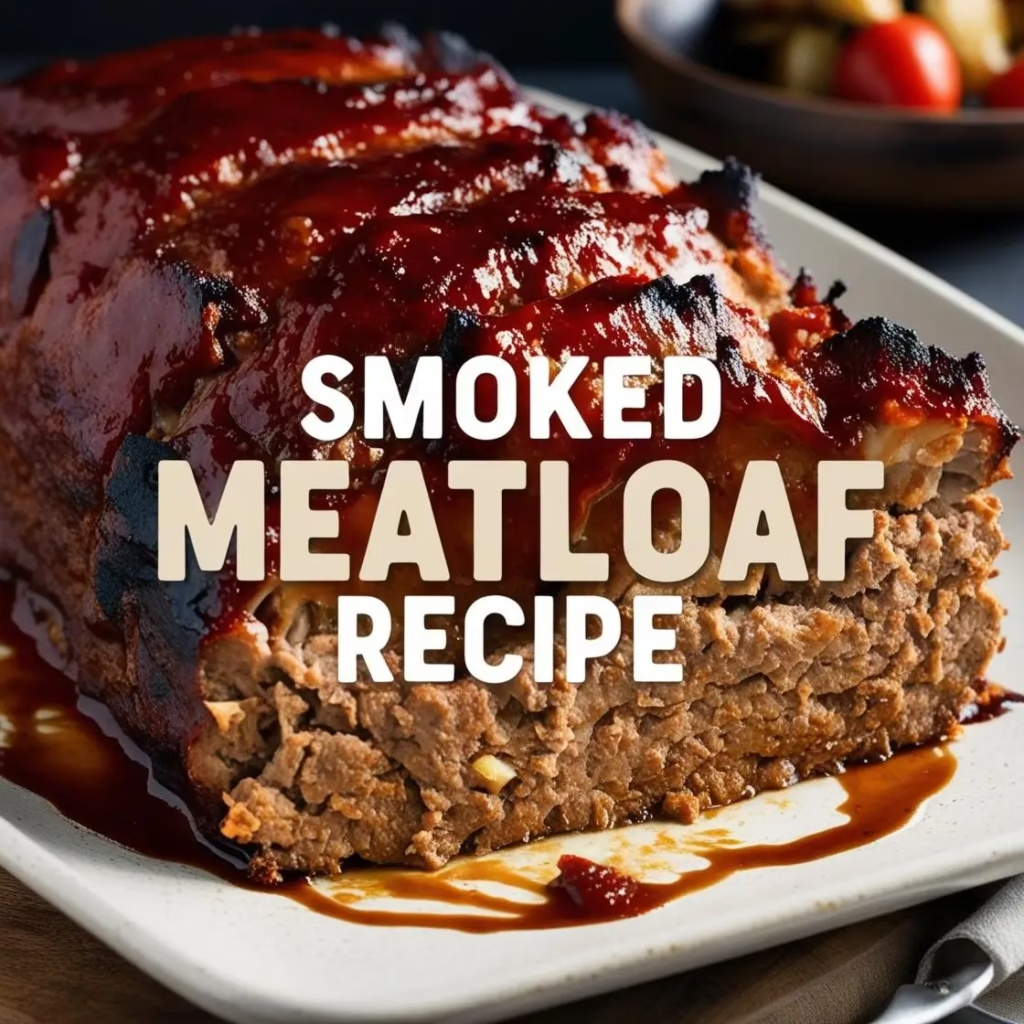
Why Smoked Meatloaf is the Ultimate Comfort Food
Meatloaf has long been a staple of American comfort food, but smoking elevates this classic dish to new heights. The slow cooking process infuses the meat with complex smoky flavors while maintaining incredible moisture. Unlike oven-baked versions, smoked meatloaf develops a delicious outer bark similar to good barbecue, creating a wonderful texture contrast with the tender interior. The combination of familiar, homey flavors with the primal satisfaction of smoke-kissed meat makes this dish truly special – it’s nostalgic comfort food reimagined for the modern palate.
Ingredients You’ll Need for the Best Smoked Meatloaf
For the Meatloaf:
- 1 lb ground pork
- 2 lbs ground beef (80/20 blend)
- 1 cup breadcrumbs
- 1 medium onion, finely diced
- 2 cloves garlic, minced
- 2 large eggs, beaten
- 1/4 cup ketchup
- 1 tablespoon Dijon mustard
- 2 tablespoons Worcestershire sauce
- 1 teaspoon dried thyme
- 1 teaspoon dried oregano
- 1/2 teaspoon black pepper
- 1 teaspoon smoked paprika
- 1 1/2 teaspoons salt
- 1/4 cup chopped fresh parsley
For the Glaze:
- 1/2 cup ketchup
- 2 tablespoons brown sugar
- 1 tablespoon apple cider vinegar
- 1 teaspoon smoked paprika
- 1/2 teaspoon garlic powder
Equipment
- Smoker (pellet, electric, or charcoal)
- Wood chips or pellets (hickory, apple, or oak recommended)
- Meat thermometer
- Aluminum foil
- Large mixing bowl
- Loaf pan or aluminum foil pan
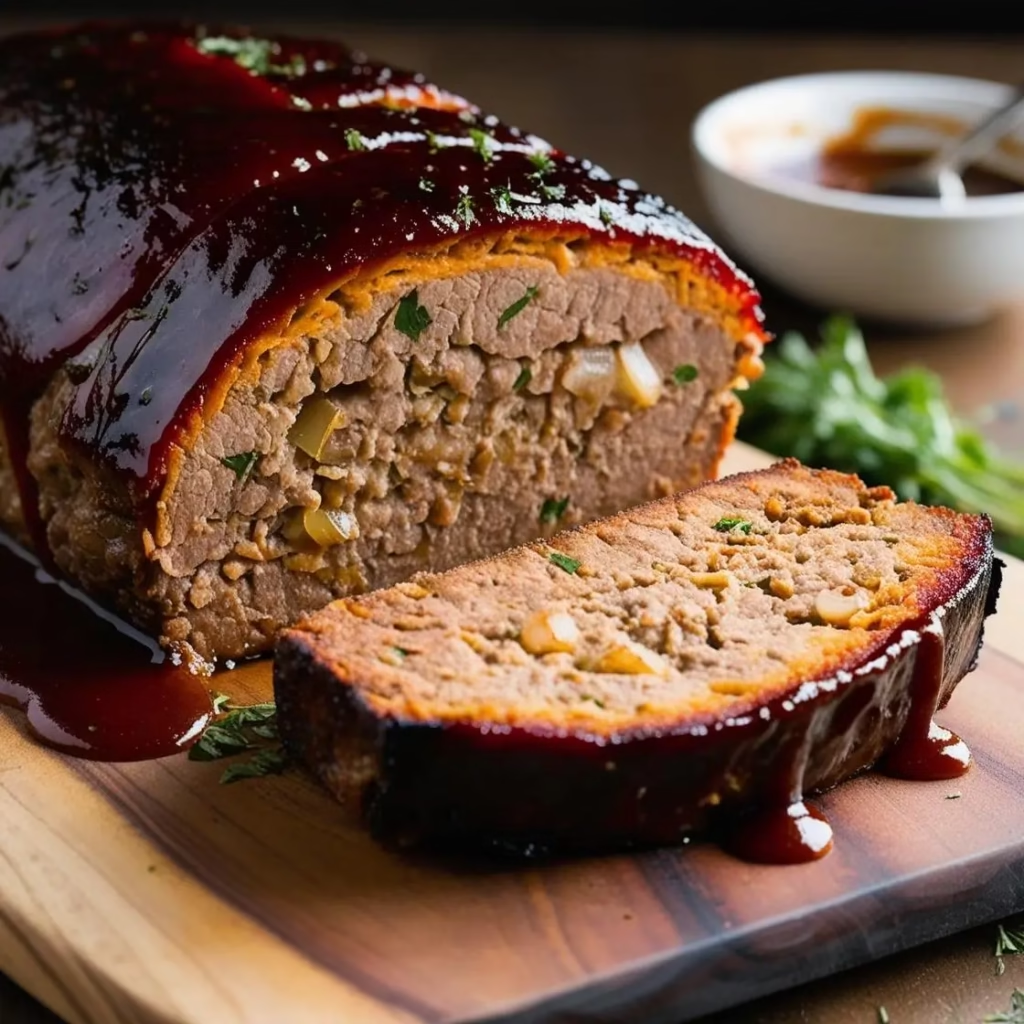
3) Step-by-Step Guide to Smoking Meatloaf
Preparation:
- Preheat your smoker to 250°F (121°C).
- In a small bowl, mix together all glaze ingredients and set aside.
Making the Meatloaf:
- In a large mixing bowl, combine ground beef and meat.
- Add diced onion, minced garlic, breadcrumbs, beaten eggs, ketchup, Worcestershire sauce, Dijon mustard, and all seasonings.
- Mix gently with your hands until just combined. Avoid overmixing to keep the meatloaf tender.
- Form the mixture into a loaf shape, approximately 9″ x 5″.
- Place the meatloaf directly on the smoker grates or in a foil pan with holes poked in the bottom to allow smoke circulation and fat drainage.
Smoking:
- Insert a meat thermometer into the center of the meatloaf.
- Smoke at 250°F for about 1 hour.
- After 1 hour, brush the top and sides of the meatloaf with half of the glaze.
- Continue smoking for another 1-2 hours, or until the internal temperature reaches 160°F (71°C).
- Apply the remaining glaze during the last 30 minutes of cooking.
Finishing:
- Once the meatloaf reaches 160°F, remove it from the smoker.
- Tent loosely with foil and let rest for 15 minutes before slicing.
- Slice into 1-inch thick pieces and serve hot.
Cooking Notes
- For best results, use a mix of beef and pork for ideal flavor and moisture.
- Hickory wood provides a classic BBQ flavor, apple offers a sweeter note, and oak gives a more subtle smoke flavor.
- If your smoker runs hot, check the internal temperature earlier to prevent overcooking.
- The meatloaf can be formed ahead of time and refrigerated for up to 24 hours before smoking.
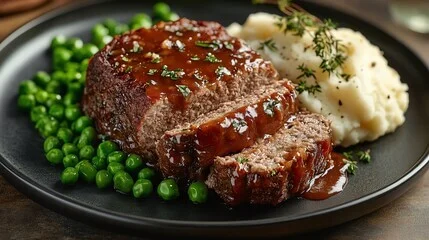
Tips for Serving and Storing Smoked Meatloaf
- Temperature Control: Maintain a consistent smoker temperature throughout cooking for even results.
- Meat Selection: Choose meat with sufficient fat content (80/20 is ideal) to keep the meatloaf moist during the long smoking process.
- Don’t Pack Too Tightly: When forming your loaf, press gently – overpacking creates a dense, tough texture.
- Use a Water Pan: Placing a pan of water in your smoker helps maintain humidity and prevents the meatloaf from drying out.
- Let It Rest: Don’t skip the 15-minute rest after cooking – this allows juices to redistribute throughout the meat.
- Experiment with Woods: Try different wood combinations to create your signature flavor profile.
- Make Extra: Leftover smoked meatloaf is amazing cold or reheated in sandwiches.
- Internal Temperature is Key: Always use a meat thermometer to ensure food safety and optimal doneness.
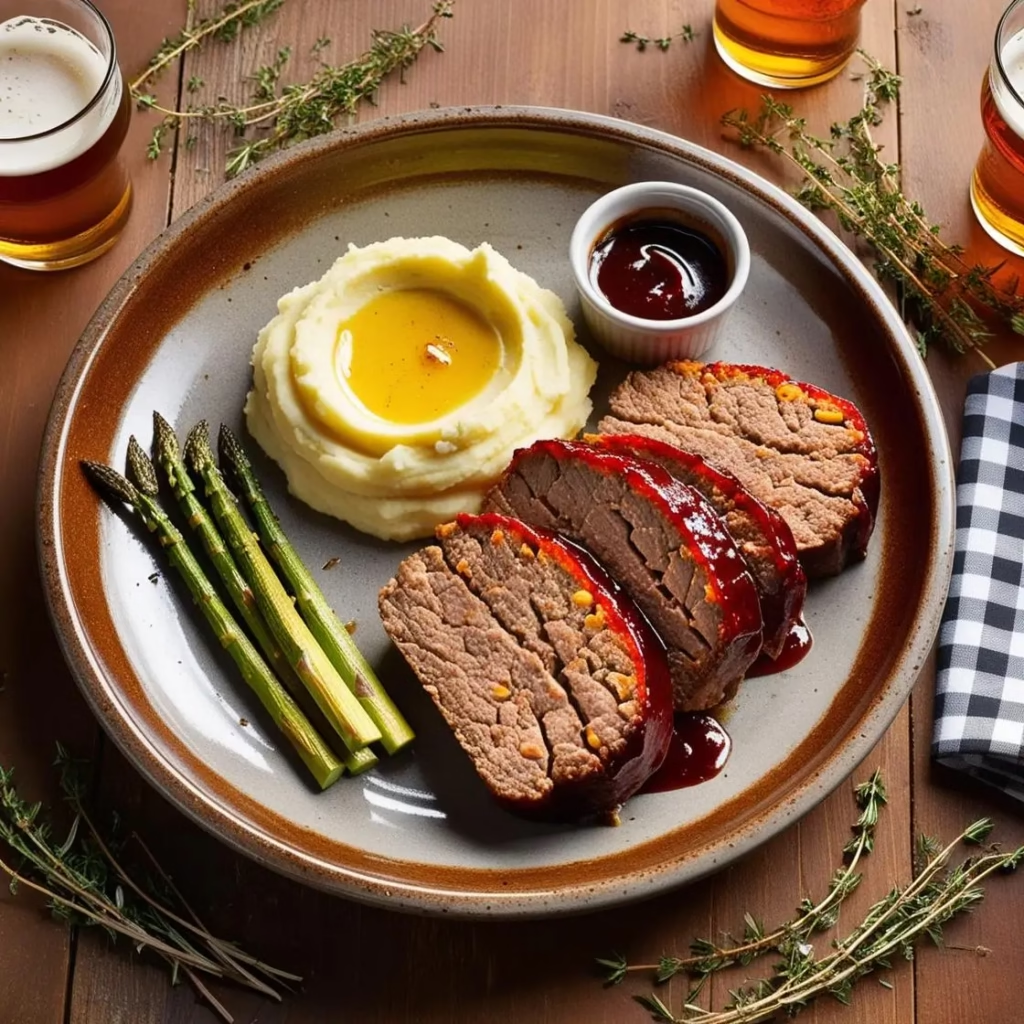
Storage Instructions
- Refrigerate leftovers in an airtight container for up to 4 days.
- Freeze sliced meatloaf for up to 3 months. Thaw overnight in the refrigerator before reheating.
Serving Suggestions
- Serve with classic sides like mashed potatoes, mac and cheese, or roasted vegetables.
- Leftover smoked meatloaf makes excellent sandwiches the next day.
- Pairs well with a bold red wine or craft beer.
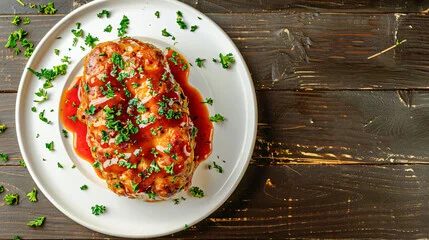
Nutrition Information
(Per serving, based on 10 servings)
- Calories: 385
- Protein: 29g
- Fat: 25g
- Saturated Fat: 9g
- Carbohydrates: 10g
- Fiber: 1g
- Sugar: 4g
- Sodium: 680mg
*Nutrition values are approximate and may vary based on exact ingredients used.
What to serve with Smoked Meatloaf
- Saffron Rice
- Crispy Fingerling Potato
- Red Rice
- Creamy and Easy Mashed Potatoes
- Slow Cooker Queso Dip
Smoked meatloaf offers a bold, flavorful twist on the traditional dish, making it a must-try for anyone who loves smoky, tender meats with a burst of rich, savory flavors. The combination of slow-smoking with aromatic wood chips transforms the humble meatloaf into an unforgettable meal, perfect for any occasion—from family dinners to festive holidays and backyard BBQs. If you’re tired of the same old baked meatloaf, smoking it adds an entirely new dimension, bringing out a smoky depth and juiciness that’s hard to beat.
We’d love to hear about your smoked meatloaf adventures. Share your recipe tweaks, favorite wood chips, or any secret ingredients you’ve added in the comments below or on social media. Let’s create a community of meatloaf lovers who are ready to take their cooking to the next level with the magic of smoking!
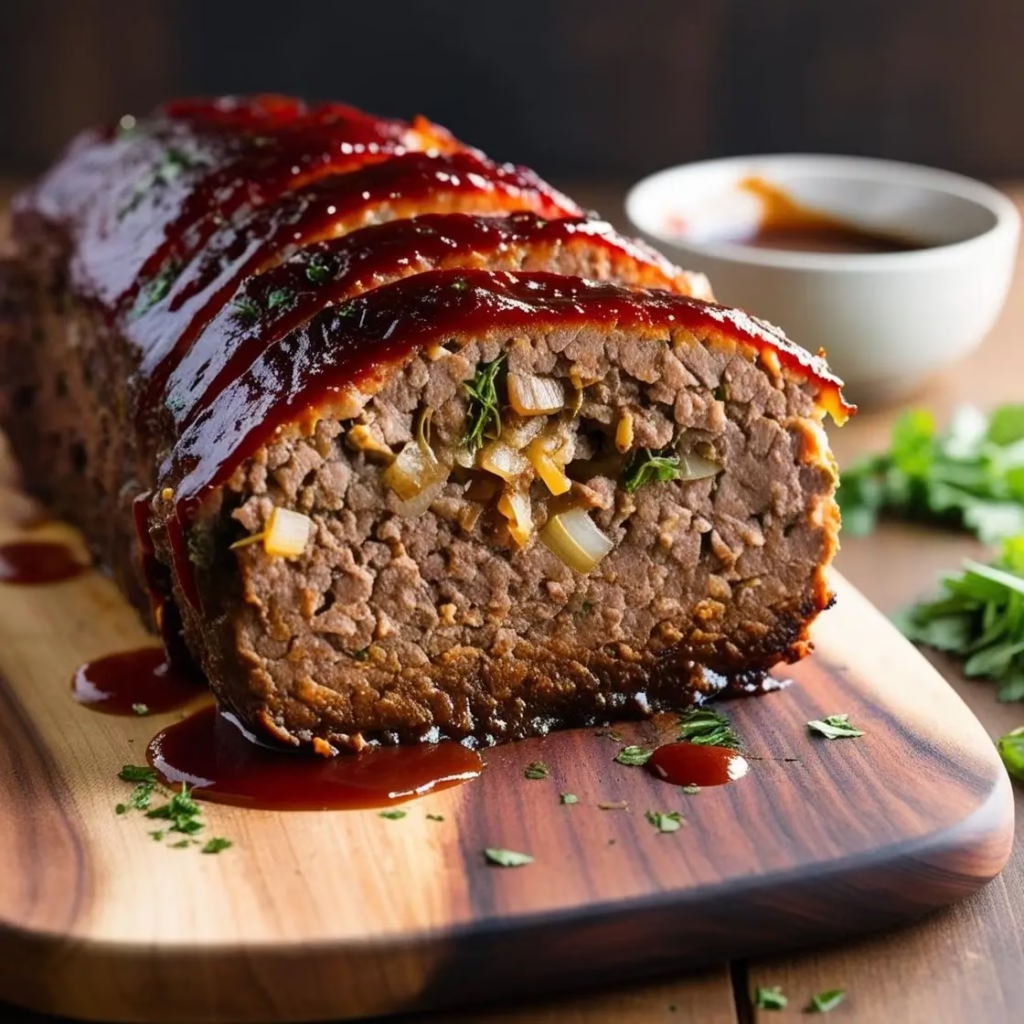
How to Make the Best Smoked Meatloaf Recipe: A Flavorful Twist on a Classic
Description
A delicious twist on classic meatloaf, slow-smoked to perfection for a rich, smoky flavor and tender texture. This recipe combines traditional meatloaf ingredients with wood smoke for an unforgettable dish that’s perfect for weekend gatherings.
Ingredients
For the Meatloaf:
For the Glaze:
Instructions
- Preheat your smoker to 250°F (121°C).
- In a small bowl, mix together all glaze ingredients and set aside.
- In a large mixing bowl, combine ground beef and pork.
- Add diced onion, minced garlic, breadcrumbs, beaten eggs, ketchup, Worcestershire sauce, Dijon mustard, and all seasonings.
- Mix gently with your hands until just combined. Avoid overmixing to keep the meatloaf tender.
- Form the mixture into a loaf shape, approximately 9″ x 5″.
- Place the meatloaf directly on the smoker grates or in a foil pan with holes poked in the bottom to allow smoke circulation and fat drainage.
- Insert a meat thermometer into the center of the meatloaf.
- Smoke at 250°F for about 1 hour.
- After 1 hour, brush the top and sides of the meatloaf with half of the glaze.
- Continue smoking for another 1-2 hours, or until the internal temperature reaches 160°F (71°C).
- Apply the remaining glaze during the last 30 minutes of cooking.
- Once the meatloaf reaches 160°F, remove it from the smoker.
- Tent loosely with foil and let rest for 15 minutes before slicing.
- Slice into 1-inch thick pieces and serve hot.
Preparation:
Making the Meatloaf:
Smoking:
Finishing:
Notes
- For best results, use a mix of beef and pork for ideal flavor and moisture.
Hickory wood provides a classic BBQ flavor, apple offers a sweeter note, and oak gives a more subtle smoke flavor.
If your smoker runs hot, check the internal temperature earlier to prevent overcooking.
The meatloaf can be formed ahead of time and refrigerated for up to 24 hours before smoking.

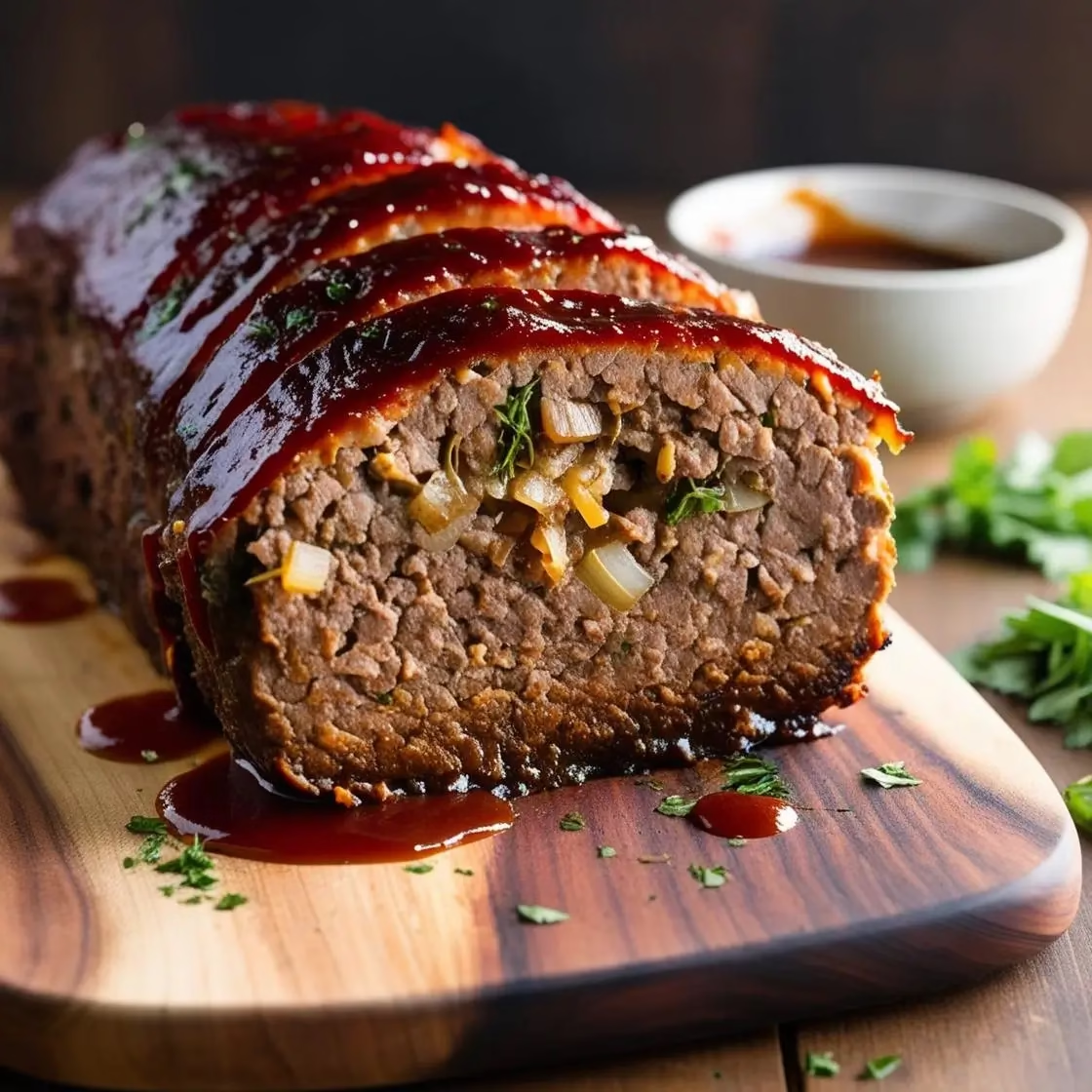
février 26, 2025 at 6:23 pm[…] BBQ meatloaf […]